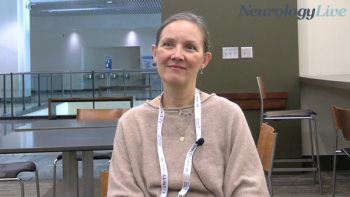A version of this article previously appeared on our sister site, NeurologyLive.
Data presented at the 2024 Muscular Dystrophy Association (MDA) Clinical and Scientific Conference, held March 3-6, in Orlando, Florida, show that Sarepta Therapeutics’ gene therapy delandistrogene moxeparvovec (Elevidys; previously known as SRP-9001) failed to meet the primary end point in part 1 of the phase 3 EMBARK study (NCT05096221) of Duchenne muscular dystrophy (DMD).1 Although, the data suggested positives in secondary analyses such as time to rise, microdystrophin expression, and 10-meter walk/run.
The assessment was led by Jerry Mendell, MD, director of the Center for Gene Therapy at Nationwide Children’s Hospital, and included individuals who had North Star Ambulatory Assessment (NSAA) scores between 16 and 29 at screening, had recombinant adenoassociated virus serotype rh74 (AAVrh74) antibody titer less than 1:400, and were on a stable daily dose of oral corticosteroids for at least 12 weeks before the trial start.
Treatment with delandistrogene moxeparvovec resulted in a nominal difference in the change of NDAA total score compared with placebo after 52 weeks (delandistrogene moxeparvovec: change, 2.6 [n = 63]; placebo: change, 1.9 [n = 61]). There were no identified new safety signals among the cohort of ambulatory patients between 4 and 8 years old who had a confirmed DMD mutation within exons 18-79, reinforcing the favorable safety profile observed to date.
At week 52, key secondary end points, which included time to rise, micro-dystrophin expression, and 10-meter walk/run demonstrated treatment benefit in both age groups (4-5 and 6-7 years; P <.005). In addition, stride velocity 95th centile and time to ascend 4-steps showed benefit that was similar in magnitude and significant in the overall population (P <.005). "Based on the totality of functional assessments including the timed function tests, treatment with delandistrogene moxeparvovec indicates beneficial modification of disease trajectory," the study authors concluded.
READ MORE: Sarepta’s Bid for Expanded Indication for DMD Gene Therapy Elevidys Now Under Priority Review by the FDA
In June 2023, the FDA approved delandistrogene moxeparvovec as the first gene therapy for patients with DMD, indicated specifically for ambulatory pediatric patients aged 4 to 5 years and contraindicated for those with any deletion in exon 8 and/or exon 9 in the DMD gene.
Key Takeaways
- Delandistrogene moxeparvovec missed the primary end point in the EMBARK trial, but showed some positive secondary effects.
- Functional tests suggest delandistrogene moxeparvovec may modify DMD trajectory positively, warranting further investigation.
- No new safety issues emerged in ambulatory patients with DMD, confirming the treatment's favorable safety profile thus far.
As it was approved under the accelerated approval pathway, the phase 3 EMBARK study was designed to serve as a confirmatory study for agent.2 EMBARK consists of 2 parts, both of which are 52 weeks in length. In part 1, patients were randomly assigned 1:1 to either delandistrogene moxeparvovec or placebo, according to age at randomization and baseline NSAA score. For the delandistrogene moxeparvovec group, a single intravenous 1.33x1014 vg/kg linear standard dose was used.
The Sarepta product was granted approval based on changes in a surrogate end point—the expression of microdystrophin—from several different trials: the phase 1/2 SRP-9001-101 (NCT03375164) study, the phase 2 SRP-9001-102 study, and the phase 1 ENDEAVOR study (SRP-9001-103; NCT04626674).
Data announced in 2022 from the 20-patient cohort 1 of ENDEAVOR, findings showed that delandistrogene-moxeparvovec–treated patients improved 4 points from their pretherapy baselines on the NSAA compared with a propensity-weighted external control group (P <.0001) over 1 year. These patients demonstrated a 3.8-point (unadjusted means) and 3.2-point (least squared means) improvement that diverged from the natural history of DMD over time.3
Click here for more coverage of MDA 2024.
REFERENCES
1. Mendell J, Muntoni F, McDonald C, et al. Safety and efficacy of delandistrogene moxeparvovec versus placebo in Duchenne muscular dystrophy (EMBARK): pivotal phase 3 primary results. Presented at: MDA Clinical and Scientific Conference; March 3-6; POSTER M164
2. Sarepta Therapeutics announces FDA approval of Elevidys, the first gene therapy to treat Duchenne muscular dystrophy. News release. June 22, 2023. Accessed March 3, 2024.https://www.businesswire.com/news/home/20230622454844/en/
3. Sarepta Therapeutics’ investigational gene therapy SRP-9001 for Duchenne muscular dystrophy demonstrates significant functional improvements across multiple studies. News release. Sarepta Therapeutics, Inc. July 6, 2022. Accessed March 3, 2024. https://investorrelations.sarepta.com/news-releases/news-release-details/sarepta-therapeutics-investigational-gene-therapy-srp-9001












































